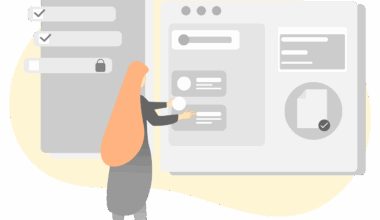Automating Bids in Microsoft Advertising PPC: Tips and Tricks
Effective bid management is crucial for maximizing your return on investment in Microsoft Advertising PPC campaigns. One of the best strategies is to automate your bids using tools provided by the platform. Automation helps streamline your processes and optimizes performance while reducing manual efforts. Start by analyzing your campaign data to identify patterns in your audience’s behavior. Use these insights to set clear goals for your automated bids, focusing on metrics like conversion rates and cost per acquisition. Consider leveraging Microsoft Advertising’s various bid strategies. These include Target CPA, Maximize Clicks, and Target ROAS, which help you achieve specific outcomes based on campaign type. Implementing these strategies allows Microsoft to adjust bids in real-time, enhancing your ability to win clicks at optimal costs. Additionally, regularly reviewing and fine-tuning your automated strategies can lead to improved results. Keep an eye on changes in competitor activity and platform updates that may affect your bidding approach. Embrace innovative features like custom rules to tailor your automation further, ensuring that your campaigns remain effective in a dynamic market environment.
Monitoring performance regularly is critical to the success of your automated bidding strategy. Tools such as Microsoft Advertising’s performance reports provide valuable insights into how your campaigns are performing over time. Specifically, pay attention to critical metrics like your Click-Through Rate (CTR) and conversion metrics to evaluate overall campaign effectiveness. Moreover, set specific KPIs to measure automation success against your predefined campaign objectives. For instance, you may track how close actual results come to your target CPA or ROAS. Adjustments may be necessary based on performance fluctuations, including modifying bid amounts or tweaking keyword targeting. It is also essential to give your automation time to adjust. Occasionally, results may not be immediate, and fine-tuning parameters can take time to reflect in performance metrics. Additionally, consider conducting A/B tests to gauge the efficacy of automated bid strategies compared to manual methods. This approach will guide you in understanding the best tactics for your target audience and budget. Finally, ensure you are well versed in Microsoft Advertising support resources, exploring them for troubleshooting bid automation issues you might encounter along the way.
Leveraging Audience Targeting
Incorporating effective audience targeting into your PPC campaigns is an excellent approach for improving automated bidding outcomes. Microsoft Advertising allows you to create tailored audience segments based on demographics, interests, and online behavior. By segmenting your audience effectively, you can ensure that your ads reach the right people at the most opportune times. Start by analyzing existing customer data to identify high-performing segments and potential customer profiles, catering specifically to their needs and preferences. Use insights to create custom audiences and leverage Microsoft’s In-Market Audiences features. This allows you to identify users actively searching for specific products and services, improving your bid strategies. Focus on improving your audience targeting dynamically by implementing remarketing campaigns, which can help recapture lost leads and enhance overall campaign performance. Automated bidding can be highly effective when combined with targeted audiences, as it allows Microsoft to optimize bids based on the likelihood of conversion. However, keep in mind that regular audience refinement is essential for long-term success, and updating segments periodically ensures you’re always engaging potential customers effectively.
Continuous learning and adapting your approach is paramount when it comes to automated bidding in Microsoft Advertising. As digital marketing landscapes shift rapidly, staying updated on the latest trends and technologies will keep your strategies relevant. Regularly review educational resources, such as online courses, webinars, and the Microsoft Advertising blog, to increase your knowledge of automation tools. Additionally, joining PPC-focused community forums and groups can connect you with other professionals sharing their experiences with automation. Engaging with peers can provide insights into successful techniques and common pitfalls, further refining your approach to bidding strategies. Be sure to share your findings and experiments with the community. An essential part of professional development is knowledge exchange, which enriches everyone involved. Also, consider subscribing to industry-related newsletters for ongoing updates. Staying informed will empower you to innovate continuously within your campaigns, ensuring that you maximize your budget efficiency and overall performance. Apply insights from your peers and industry leaders to foster a culture of testing and iteration, which ultimately leads to enhanced campaign results through effective automated bidding strategies.
Utilizing Ad Extensions Effectively
In the world of PPC advertising, ad extensions can significantly affect your campaign results. Microsoft Advertising offers various ad extensions that provide additional information about your business. This can lead to increased visibility, higher click-through rates, and better overall performance. Implementing site link extensions is particularly beneficial, as they direct users to specific pages on your website, enabling you to highlight critical aspects of your offerings. Furthermore, consider utilizing call extensions to encourage users to connect with your business directly. This is crucial for driving conversions and establishing a direct line of communication. Location extensions can also be leveraged to guide users to your physical store, particularly effective for local businesses. Automated bidding can be further improved through these extensions as they provide Microsoft Ads with more information to gauge the potential success of specific placements. Always ensure your ad extensions are relevant to the keywords and audience you’re targeting. This increases the chances of your ads being shown in ideal positions, resulting in better click-through rates and conversions, especially when combined with the power of automated bidding strategies.
The importance of maintaining a healthy Quality Score cannot be overstated, especially when employing automated bidding strategies in Microsoft Advertising. Quality Score directly impacts how much you will pay for clicks and, ultimately, your ad placement. A strong Quality Score is achieved through relevant keywords, engaging ad copy, and excellent landing pages. Ensure to perform comprehensive keyword research to identify terms that resonate with your audience, as this drives better relevance. Craft ad copy that is not only persuasive but also aligns with the user’s search intent, as this boosts CTR. Additionally, landing pages must provide a seamless experience that matches the user’s expectations based on the ad. Google considers factors like page loading speed, relevance, and mobile-friendliness in determining Quality Scores. Therefore, regularly inspect and optimize these facets of your campaign to ensure favorable Quality Score outcomes. With a higher Quality Score, your automated bids can function more efficiently. Moreover, being proactive with optimizations will likely lead to reduced costs per click, ensuring your overall PPC budget remains effective in generating quality traffic and conversions from your automated bidding processes.
Final Thoughts on Automation
As you explore automated bidding strategies within Microsoft Advertising PPC campaigns, consider the balance between technology and human insights. While automation delivers immediate advantages such as efficiency and cost reduction, human oversight remains crucial for exceptional campaign performance. Engage with the performance reports produced by Microsoft Advertising, and base your strategy on data-driven insights rather than emotion. Rely on automation for bid management while remaining vigilant about performance indicators and strategic adjustments. Additionally, ensure that your automated bidding aligns consistently with broader marketing goals, as this creates a cohesive approach across all channels. Continual testing and experimentation should be the foundation of your automation strategy. Try different settings, audiences, and ad formats to uncover what resonates best with your target market. Prioritize adaptability in your campaigns, as market dynamics frequently shift. Finally, celebrate small wins by tracking successes over time, fostering a positive feedback loop that helps optimize automated strategies further. With the right balance of technology and personal touch, your Microsoft Advertising campaigns can effectively reach your desired outcomes while maintaining efficiency in your budget allocation.


